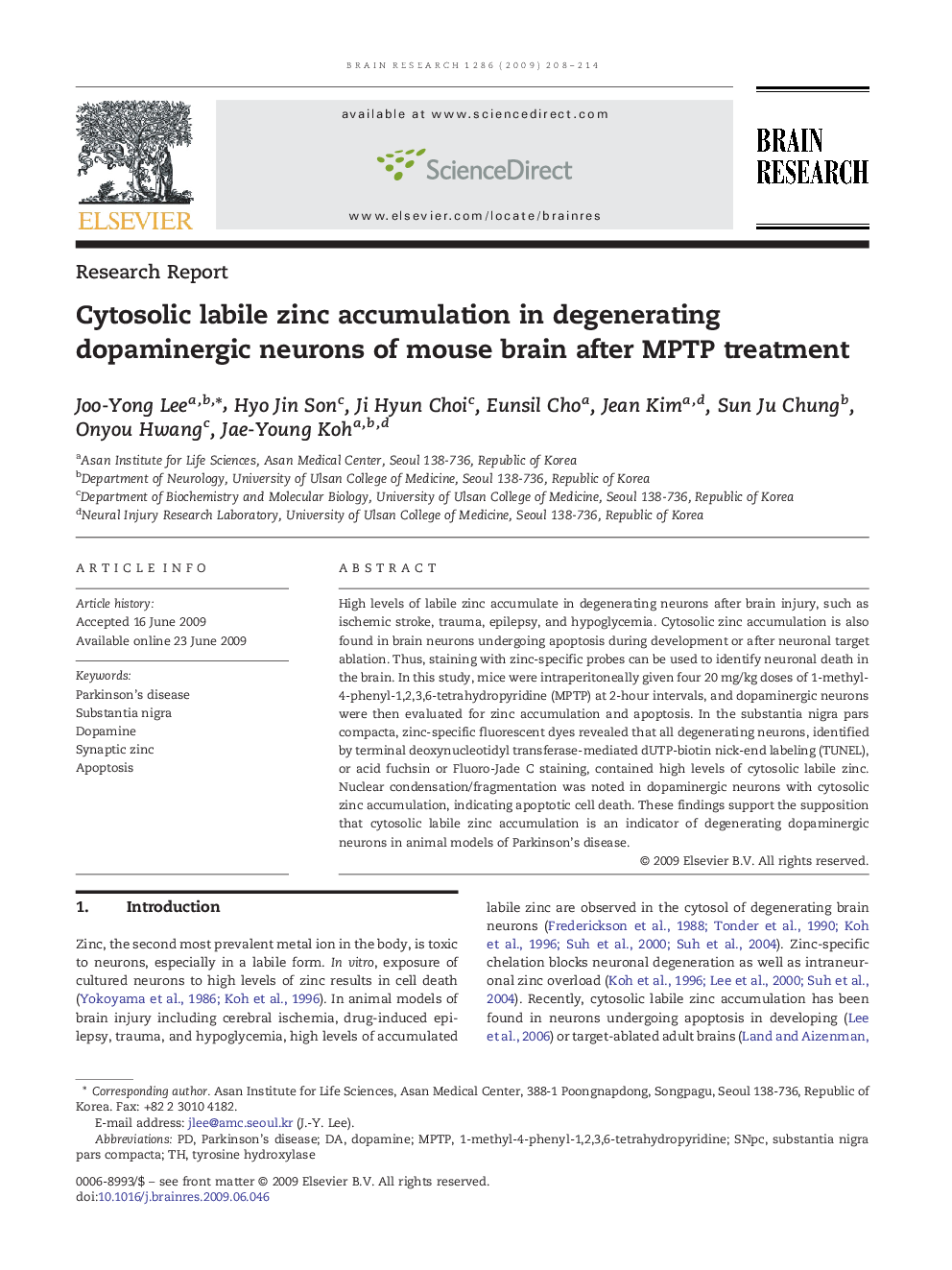| Article ID | Journal | Published Year | Pages | File Type |
|---|---|---|---|---|
| 4327955 | Brain Research | 2009 | 7 Pages |
High levels of labile zinc accumulate in degenerating neurons after brain injury, such as ischemic stroke, trauma, epilepsy, and hypoglycemia. Cytosolic zinc accumulation is also found in brain neurons undergoing apoptosis during development or after neuronal target ablation. Thus, staining with zinc-specific probes can be used to identify neuronal death in the brain. In this study, mice were intraperitoneally given four 20 mg/kg doses of 1-methyl-4-phenyl-1,2,3,6-tetrahydropyridine (MPTP) at 2-hour intervals, and dopaminergic neurons were then evaluated for zinc accumulation and apoptosis. In the substantia nigra pars compacta, zinc-specific fluorescent dyes revealed that all degenerating neurons, identified by terminal deoxynucleotidyl transferase-mediated dUTP-biotin nick-end labeling (TUNEL), or acid fuchsin or Fluoro-Jade C staining, contained high levels of cytosolic labile zinc. Nuclear condensation/fragmentation was noted in dopaminergic neurons with cytosolic zinc accumulation, indicating apoptotic cell death. These findings support the supposition that cytosolic labile zinc accumulation is an indicator of degenerating dopaminergic neurons in animal models of Parkinson's disease.
